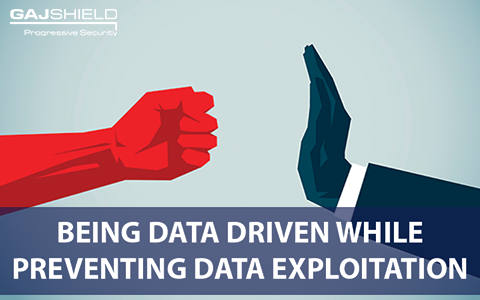Businesses across the world, regardless of the industry or scale of operations, are using data-intensive technologies like analytics and machine learning to enhance decision-making. Also, the recent emergence of technologies like IoT means that more data is being generated now than ever before. This trend of increased generation and utilisation of data has led to the rising importance of data and increasing need to protect sensitive data from exploitation. And by exploitation, we mean access and misuse of data by unauthorised entities. This could be in the form of leaking customer data on the open internet or losing trade secrets and sensitive corporate data to competitors. This data could be exploited for multiple reasons such as:
- Exposing trade secrets to undermine a company's competitive advantage.
- Damaging a brand's reputation by leaking customer data on the internet, and
- Causing legal trouble sure to non-adherence to data governance and data security regulations.
These are just a few of the numerous ways in which data exploitation can harm businesses. And the consequences of such occurrences could be devastating, significantly impacting a business' sustainability. In fact, it has been reported that 60% of companies run out of business within 6 months of reporting a data breach. However, preventing data exploitation does not mean giving up on your opportunities to enhance performance by using data. You need to ensure that your data-driven processes are protected through strong policies, diligent data security practices, and advanced data security technologies. And it all starts with data governance.

Implementing data governance
Data governance is the practice of establishing protocols for the use, storage, and management of the data possessed by an organization. This means, among a multitude of other things, determining the authorised users of specific pieces of data, mapping out standard data flows, and defining data ownership. By establishing a strict data governance framework, businesses can standardize and hence control how data is used within the organization. This also gives direction to the users of data within the organization on how to handle data and prevent its misuse. Data governance is important to have data security.
The data governance structure for different organizations can differ based on their industry, size, geography, and internal business processes. It is important to implement data governance by taking into account the business' hierarchical structure, established communication channels, data privacy laws applicable to their region and industry, and the enterprise IT infrastructure. Formulating a data governance plan should be a collaborative exercise involving business, technology, and cybersecurity leaders and other key stakeholders within the organization. Once a strict data governance policy is formulated, businesses can build a data security policy and enforce these policies to protect their data.
Ensuring data visibility
It is important for businesses to have complete visibility throughout their enterprise network. Business and cybersecurity leaders must be able to, at all times, be able to view and monitor the data, applications, and communications that make up the enterprise's operations. By having complete visibility over the applications, processes, users, and most importantly, the data within the organization, businesses can always ensure adherence to data governance policies, and can respond quickly to instances of violation of the same.
Data visibility is also critical for data security, as knowing what data is being sent out from the organization helps cybersecurity leaders to prevent the leakage of sensitive information. Also, monitoring data use and user behaviour can help determine patterns in the way data is used to identify anomalies and predict cybersecurity threats before they might happen.
Another reason why data and network visibility is important is for businesses to be able to detect hidden malicious actors within the organizations. The biggest reason for businesses suffering losses due to cyber-attacks and breaches is because they are unable to detect malicious entities and applications for long periods. It has been reported that it takes up to 6 months for businesses to detect data breaches. That is enough time for competitors to perform espionage or for hacking groups to siphon sensitive data.
Thus, it is important to ensure data visibility within the organization's network. The simplest way to achieve data visibility is to deploy a data security solution that offers complete visibility into a business' data and other digital assets. In fact, using a data security tool's usefulness is not just limited to offering visibility.
Starting with data security
Using intelligent data security tools, such as a GajShield Firewall with data security approach, can go a long way in protecting an organization's data from breaches and theft. Such a tool can not only help cybersecurity teams have complete visibility over their data but also allow them to exercise strict control over how the data is used and shared. Such an approach with the right tool like GajShield Data Leak Prevention can even automate tasks like identifying sensitive information and filtering it from all outgoing communications. By doing so, the GajShield firewall can prevent the loss of sensitive data like customer information, intellectual property, and confidential financial reports. Thus, businesses can preserve their reputation as well as their business-critical information without investing a lot of resources.
Ensuring that your data-driven initiatives aren’t slowed down by excessive security measures is extremely critical. To do so, it is critical to implement a GajShield Firewall with a Data Security Approach that can understand the context surrounding every outgoing communication. By doing so, it can expedite communications that are authorized by the enterprise data use policies while automatically stopping communications that do not adhere to the same, thereby balancing efficiency with security.